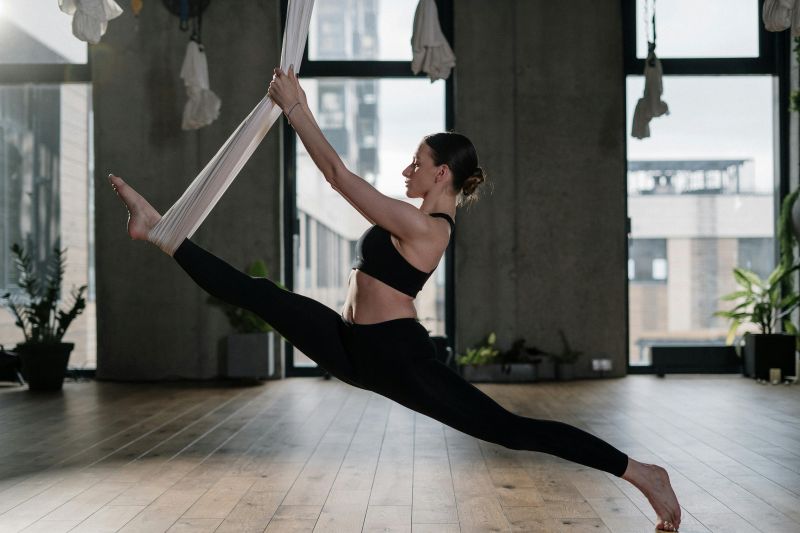When it comes to feeling strong from the inside out, the pelvic floor is often overlooked. Yet, it plays a major role in everything from bladder control to posture. Pilates is one of the best ways to build a stronger, more responsive pelvic floor. It connects breath, movement, and control, which is exactly what these deep core muscles need. And no, you don’t need to be a dancer or gymnast to feel the benefits.
People often find Pilates pelvic floor workouts gentle yet surprisingly powerful. A simple move like the “pelvic tilt” can help activate the muscles that support the bladder and uterus. For many women, especially after childbirth, these exercises feel like a homecoming to their body. It’s not about doing big movements. It’s about learning to listen to what your body needs and responding with care. If someone has prolapse or bladder leaks, a few mindful minutes with exercises each day can help rebuild control.
Across forums like r/pelvicfloor on Reddit, users have shared stories of regaining strength and confidence through Pilates. Whether you’re doing a guided mat class at home or following a certification instructor, the journey can be life-changing. And guess what? You don’t need fancy gear to start—just a mat and a few quiet minutes.

The Real Benefits Of Pilates For Pelvic Floor Health
Many people ask, “Is Pilates good for the pelvic floor?” The short answer: yes. The long answer? It’s one of the most effective, low-impact ways to support pelvic health at any stage of life. For women, especially those going through pregnancy or menopause, Pilates pelvic floor benefits are huge.
First, Pilates teaches breath control. When you inhale deeply and exhale with intention, you can gently lift the pelvic floor muscles. This simple breathing technique becomes a key part of every movement. Over time, this builds endurance in muscles that are often weak from too much sitting or childbirth.
Second, Pilates strengthens your core—and the pelvic floor is part of that core. It’s like the base of a house: if it’s strong, everything above it stands taller and more stable. By adding r exercises like the “bridge” or “tabletop hold,” people can slowly build control without strain. That makes it ideal for those with prolapse or those recovering from surgery.
Third, there’s a mental shift. Many people report feeling more in tune with their bodies. One user from Sydney mentioned that after a few weeks of consistent practice, she stopped fearing leaks while laughing or sneezing. That’s a huge win for everyday life.
If you’re searching ” benefits female,” the results are clear: better posture, more bladder control, reduced back pain, and a quiet boost in self-esteem.
How To Start A Pilates Pelvic Floor Workout At Home
Starting Pilates at home doesn’t have to be confusing. You don’t need to know all the moves or be super flexible. Think of it like brushing your teeth—just something small you do every day that adds up.
A simple Pilates pelvic floor workout might begin with breathing. Lie on your back with your knees bent. Inhale deeply into your belly. Then, as you exhale, imagine gently lifting the muscles you’d use to stop a stream of urine. This small movement is key.
Next, try the “bridge.” Still on your back, press your feet into the floor and lift your hips slowly. As you lift, exhale and tighten your pelvic floor. Lower down with control. Do five slow reps. It may not look like much, but the inner work is powerful.
Pilates teachers often say “less is more” when it comes to pelvic floor training. You don’t need an hour-long session. Even five to ten minutes can help when done with focus. If you’re feeling unsure, look for local instructors with certification. Many also offer online classes.
Also, be patient. Progress is personal. If you’re managing prolapse or recovery from birth, check in with your doctor or physio. Some also recommend Pilates for prolapse management because it strengthens without too much pressure.

Why Pelvic Floor Awareness Matters More Than You Think
For years, the pelvic floor was treated like a secret muscle group. It wasn’t talked about in school, and many people didn’t even know it existed until they had kids or reached midlife. Now, thanks to better education and open conversations, there’s more awareness—and more help.
Pilates pelvic floor exercises bring attention to the area in a gentle, healing way. Think of it like reconnecting with an old friend. The more you work together, the stronger your bond becomes. People who sit at desks all day, who carry kids on their hips, or who do heavy lifting without breath awareness are often putting strain on this area without realizing it.
When people first try a workout, they often expect big moves. But what surprises many is how quiet and focused the sessions are. It’s a reminder that strength isn’t always loud. It’s sometimes about holding a pose, feeling the breath, and building control inch by inch.
Pelvic floor health affects more than we think. It can impact digestion, balance, and even sexual wellness. That’s why regular, mindful movement matters. Pilates gives people a way to stay strong and connected without pain or pressure. And the best part? You can start today, right where you are.
Choosing A Pilates Pelvic Floor Instructor Or Certification
For those who want to go beyond home practice, finding a certified Pilates pelvic floor instructor can be a helpful next step. These professionals are trained to guide people safely and gently. They know how to adjust moves for people with prolapse or other pelvic issues.
In cities like Melbourne, London, or Los Angeles, studios often offer specific classes focusing on pelvic floor health. Some also provide certification for teachers. This training helps instructors understand how the pelvic floor works and how to cue movements that protect it.
Whether you want to become a teacher or just learn from one, certification matters. It means the instructor understands how to build strength without pressure. Many women who took classes with certified trainers said they finally felt seen and understood. That emotional support can make all the difference.
Also, community matters. Places like Reddit are full of people sharing tips, routines, and hope. Reading real stories can be both comforting and inspiring. If you’re unsure where to start, check those discussions for honest feedback.
And don’t worry—you’re not alone. Whether you’re dealing with leaks, weakness, or just want to feel more control, there are others walking the same path. Pilates gives you a kind, simple way to move forward.

FAQ’s
- What is the pelvic floor and why is it important in Pilates?
The pelvic floor is a group of muscles that support the bladder, bowel, and uterus. In Pilates, it’s part of the core. When it’s strong, it helps with posture, bladder control, and balance. - Can Pilates help with pelvic organ prolapse?
Yes, gentle Pilates pelvic floor exercises can help manage prolapse. They focus on breath and control, which helps reduce pressure and build support. - Do I need equipment for Pilates pelvic floor workouts?
No. Most Pilates pelvic floor workouts can be done on a mat at home. Some use props like small balls or bands, but they’re not required. - How often should I do pelvic floor Pilates exercises?
Even 5-10 minutes a day can help. Consistency matters more than time. Listen to your body and rest when needed. - Is there a Pilates pelvic floor certification for instructors?
Yes, many training programs offer certification. These programs teach how to safely guide others through pelvic floor strengthening.

